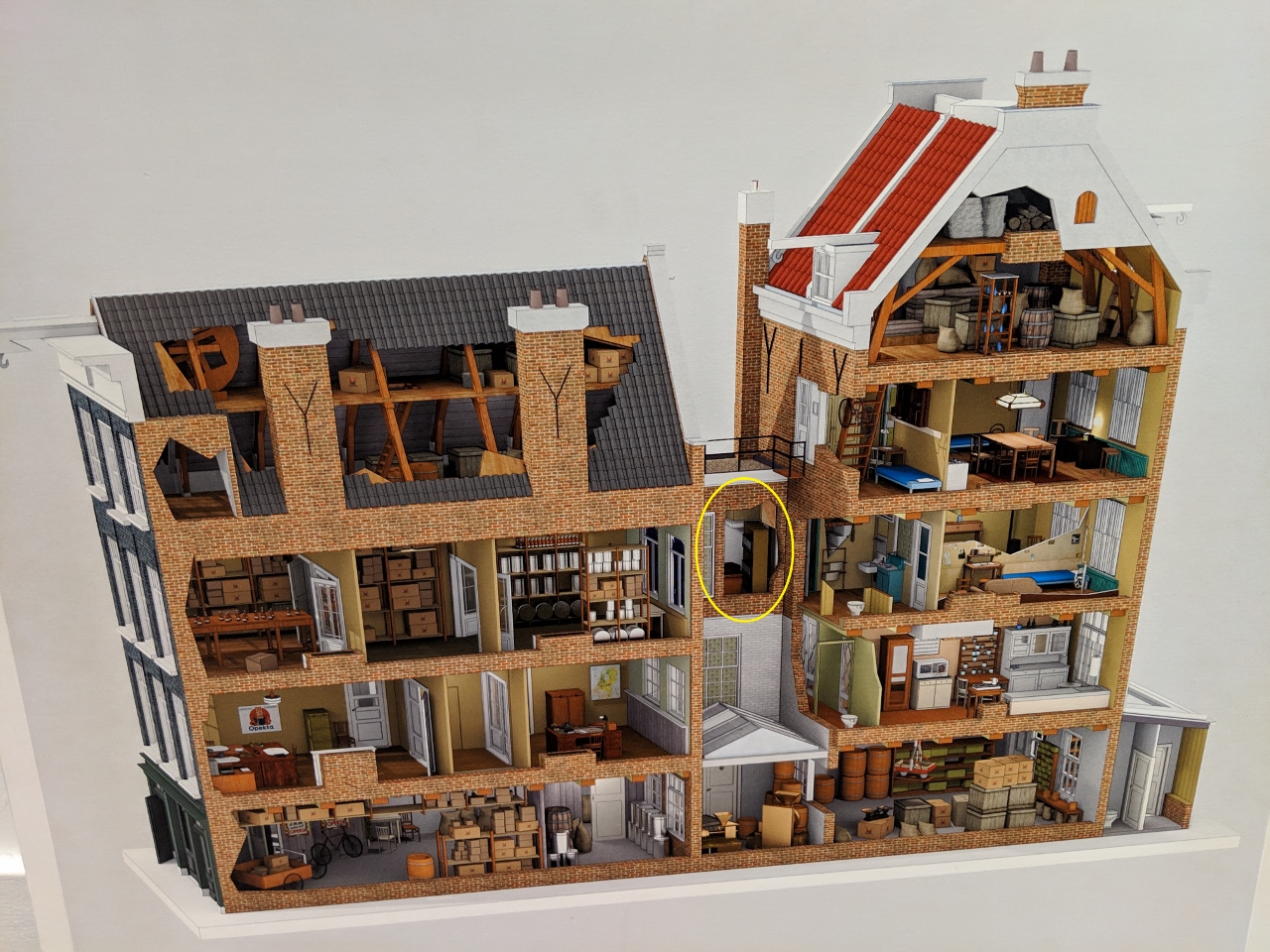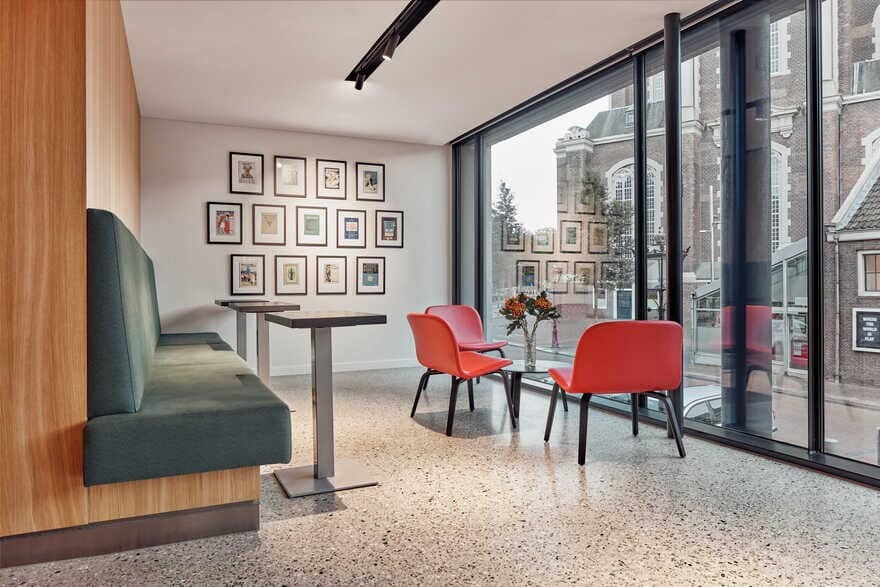Table Of Content

On display at the museum is the Academy Award that Shelley Winters won, and later donated to the museum, for her performance as Petronella van Daan in the 1959 film The Diary of Anne Frank. The award now sits in a bullet-proof glass case in the museum. 'Writing lets me get rid of it all, my sorrow disappears, my courage is revived! Anne Frank’s original red-checked diary is on display at the museum. Anne had to share a room with Fritz Pfeffer, which led to frequent arguments.
Museum of Tolerance Visitor Information
From the start of the period in hiding, Otto and Edith Frank marked their daughters’ heights on their bedroom wall. In two years’ time, Margot grew 1 centimetre while Anne grew over 13 centimetres. The exhibition tells the story of the Frank family in Frankfurt against the backdrop of the economic, social and political problems in Germany.
Reflections From a Dutch National Reckoning Smithsonian Voices Office of the Secretary of the Smithsonian ... - Smithsonian Magazine
Reflections From a Dutch National Reckoning Smithsonian Voices Office of the Secretary of the Smithsonian ....
Posted: Fri, 17 Nov 2023 08:00:00 GMT [source]
ANNE FRANK LA PRESENTS: ANNE FRANK DAY

Every Tuesday at 10am CET all tickets become available for a visit six weeks later. You can opt for a museum visit or a museum visit with an introductory program. Subsequently, the building became a warehouse, and the front warehouse with its wide stable-like doors was used to house horses. At the start of the 20th century, a manufacturer of household appliances occupied the building, succeeded in 1930 by a producer of piano rolls, who vacated the property by 1939.
CHESTNUT TREE
Mr. Kugler, you see, thought it would be better to place a cupboard in front of our door, (there are a lot of searches being carried out for hidden bicycles,) but then of course a cupboard on hinges that can open like a door. Mr. Voskuijl built the piece of furniture.’ Anne Frank wrote in her diary on 21 August 1942. In the museum you will receive information about Anne Frank, the other people in hiding in the Secret Annex, the helpers, as well as background information on the Second World War and the persecution of the Jews. Anne could see a chestnut tree through the only window that wasn’t blacked out in the attic. As long as this exists, I thought, and I may live to see it, this sunshine, the cloudless skies, while this lasts I cannot be unhappy.” A double flight of stairs leads visitors past an etched image of Anne’s beloved chestnut tree.
ANNE’S STORY
Together with his staff, Otto tried to rebuild Opekta and Pectacon, his companies. The former hiding place, the Secret Annex, was left empty. Anne Frank’s family tree is depicted on a floor-to-ceiling wall map, tracing Anne’s roots throughout Europe. Frankfurt am Main was home to the Frank family since the 1600s, and it was where Annelies "Anne" Marie Frank was born on June 12, 1929. The map follows their journey from Frankfurt to Amsterdam and their ultimate fates at Westerbork, Auschwitz and Bergen-Belsen.
Why an exhibit on Anne Frank?
Inside, visitors are seated in a 260-degree, circular theatre that approximates the size of the actual Secret Annex. A nine-minute film, projected in the round, immerses viewers in Anne’s two-year seclusion. The experience is enhanced by Steinfeld’s voice, diary excerpts, silhouettes of Anne and her fellow occupants, and audio-visual effects that convey everything from life in the annex to the harrowing sounds of nearby gunfire. Just beyond the map is a media station that plays an interview with Anne’s only living relative, her cousin Buddy Elias, who talks about his childhood memories of Anne. On the wall opposite the station, silent black-and-white footage plays on a loop, showing everyday life in pre-war Amsterdam. Anne can be briefly glimpsed leaning from a second-floor window, in a 1941 film made for her newlywed next-door neighbor.
With a New Holocaust Museum, the Netherlands Faces Its Past - The New York Times
With a New Holocaust Museum, the Netherlands Faces Its Past.
Posted: Tue, 05 Mar 2024 08:00:00 GMT [source]
The Schindler House - MAK Center for Art and Architecture
The building was opened as a museum to the public in 1960. After the war, the previous hiding place at Prinsengracht 263 and the neighbouring properties had fallen into disrepair. In 1950, the Berghaus textile factory wanted to buy the houses on the corner of the Prinsengracht and the Westermarkt. Berghaus planned to demolish the buildings and construct a new factory building.Otto Frank struggled when the demolition was announced. He was renting the building from Wessels, the owner, and they had agreed upon his right of first refusal. However, they lacked the funds for proper restoration work.In 1954, Otto Frank reluctantly sold the building to Berghaus.
Are you planning to visit the Anne Frank House, and do you want to prepare for your visit? Here, you will find practical information about our facilities, special facilities for visitors with disabilities, and our Terms and Conditions for Visitors. In June 1945, Otto Frank was the only one of the people from the Secret Annex to return from Auschwitz.
The experience begins with an image of Anne Frank and a graphic of her signature. The visitor enters a hallway that evokes a street scene from Frankfurt, Germany in 1932. To create the impression, a row of gabled facades has been silkscreened onto a zigzag wall and reflected in mirrors lining the left side of the hallway. Among the activities at multi-touch tables, visitors can create a "pledge" to make a difference and share their pledges on various social platforms.
Anne’s original diary is displayed in the renovated 265 Prinsengracht, next door to the original hideaway. Otto devoted himself to editing and getting the diary published; it was first published in Dutch in 1947. The Anne Frank Foundation was founded, with Otto’s cooperation, in 1957, with the aim of preserving the canal house as a museum. The number of visitors was initially overwhelming, and the museum was renovated and expanded in 1999.
On August 4, 1944, the Secret Annex was raided and the group was arrested. They were detained at Westerbork transit camp and deported to the Auschwitz concentration camp. Anne and her sister Margot, along with fellow annex occupant Auguste van Pels, were eventually transported to Bergen-Belsen.
The same applies to tickets for children (0-9 years old) and visitors with discount cards. The hiding place at Prinsengracht 263 was restored and it opened to the public on 3 May 1960. The Secret Annex was left empty at the request of Otto Frank.
We are an independent non-profit organisation that runs a museum in the house where Anne Frank went into hiding and we try to increase awareness of Anne’s life story all over the world. Contact us to find out how to schedule a visit that is right for you - we can advise you on tour length, other programs or events available to you that day, and how to plan a meaningful visit for you, your group or your family. A committee of prominent citizens of Amsterdam took the initiative to save the building where Anne had written her diary from demolition. The Anne Frank House organisation was established in 1957 and its main purpose was to preserve the hiding place and open it up to the public, and to promote the ideals of Anne Frank in the process.
It begins with Anne Frank’s birth in Germany in 1929, spotlights the rise to power of Hitler and his antisemitic National Socialist German Workers’ Party (NSDAP), and ends with the Frank family’s emigration to the Netherlands in 1933. The museum has a cloakroom where you can leave your coat, bag, umbrella, or buggy. Only bags that are smaller than an A4 sheet of paper can be carried inside. We do not have room to store large bags and backpacks, suitcases, or other large items. Please leave your luggage at your hotel or deposit it at Amsterdam Central Station, otherwise, you may not be able to visit the museum.
Though the total amount of floor space in the inhabited rooms came to only about 450 square feet (42 m2), Anne Frank wrote in her diary that it was relatively luxurious compared to other hiding places they had heard about. They remained hidden here for two years and one month until they were raided by the Nazi authorities, arrested, and deported to their deaths in concentration and death camps. Of the hidden group, only Otto Frank survived the camps. The entire museum, which occupies the three adjacent buildings on the street front of Prinsengracht 263 to 267,[1] opened on 3 May 1960. It preserves the hiding place (the Secret Annex at rear of 263), with the other buildings expanding the permanent exhibition on the life and times of Anne Frank, and has an exhibition space about all forms of persecution and discrimination. In 2017, the museum had 1.27 million visitors and was the third most visited museum in the Netherlands, after the Van Gogh Museum and the Rijksmuseum.

No comments:
Post a Comment